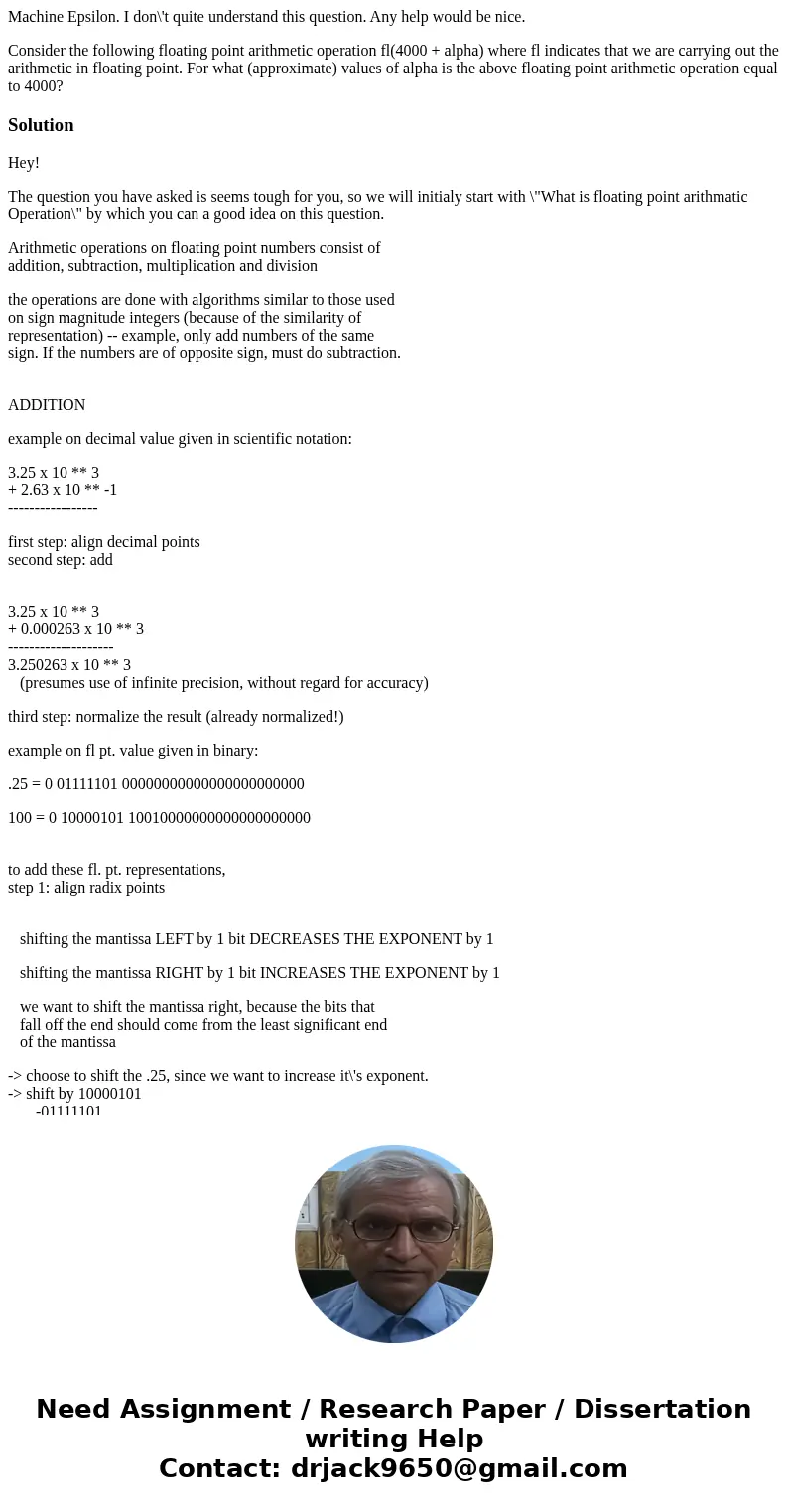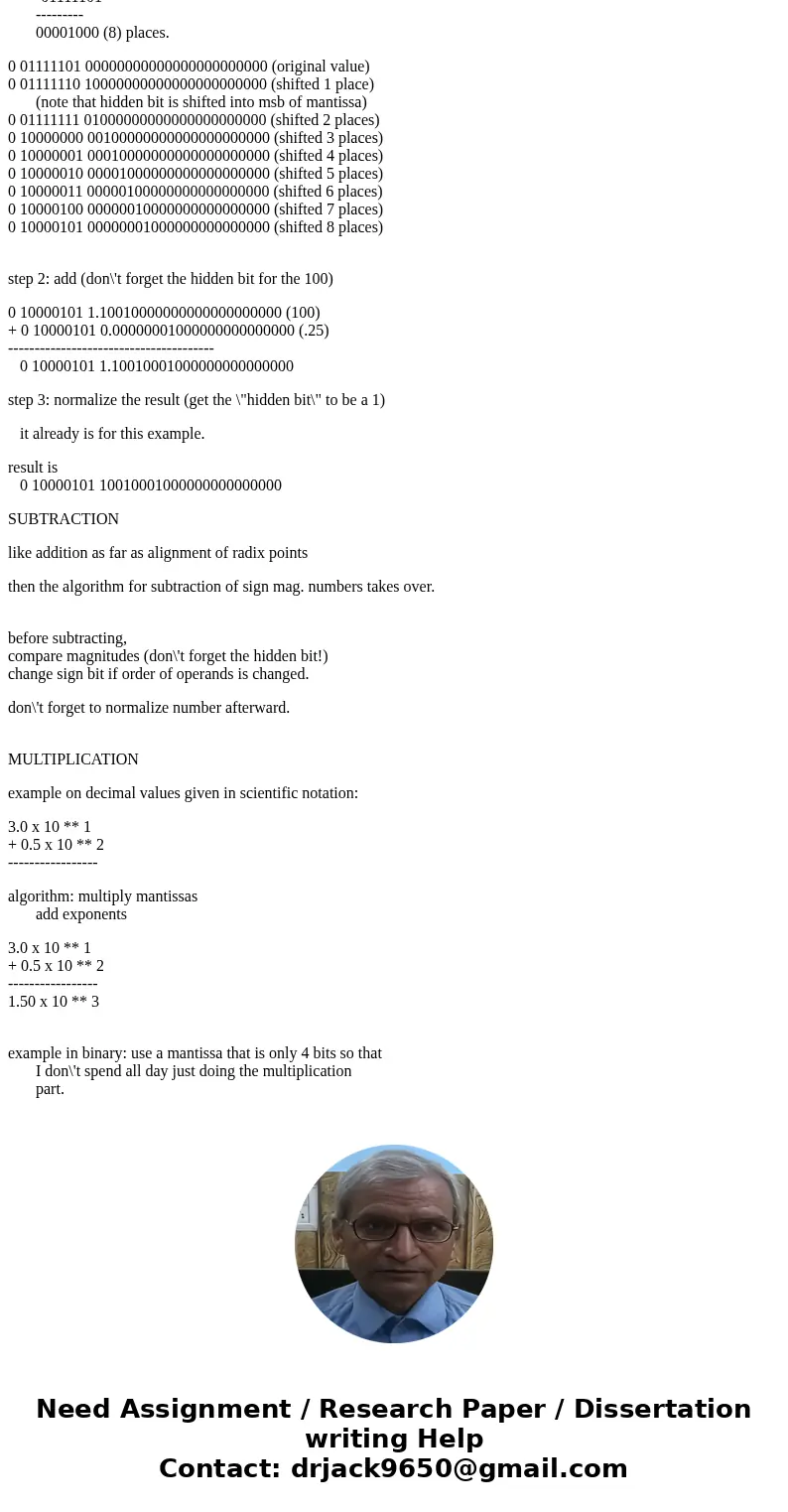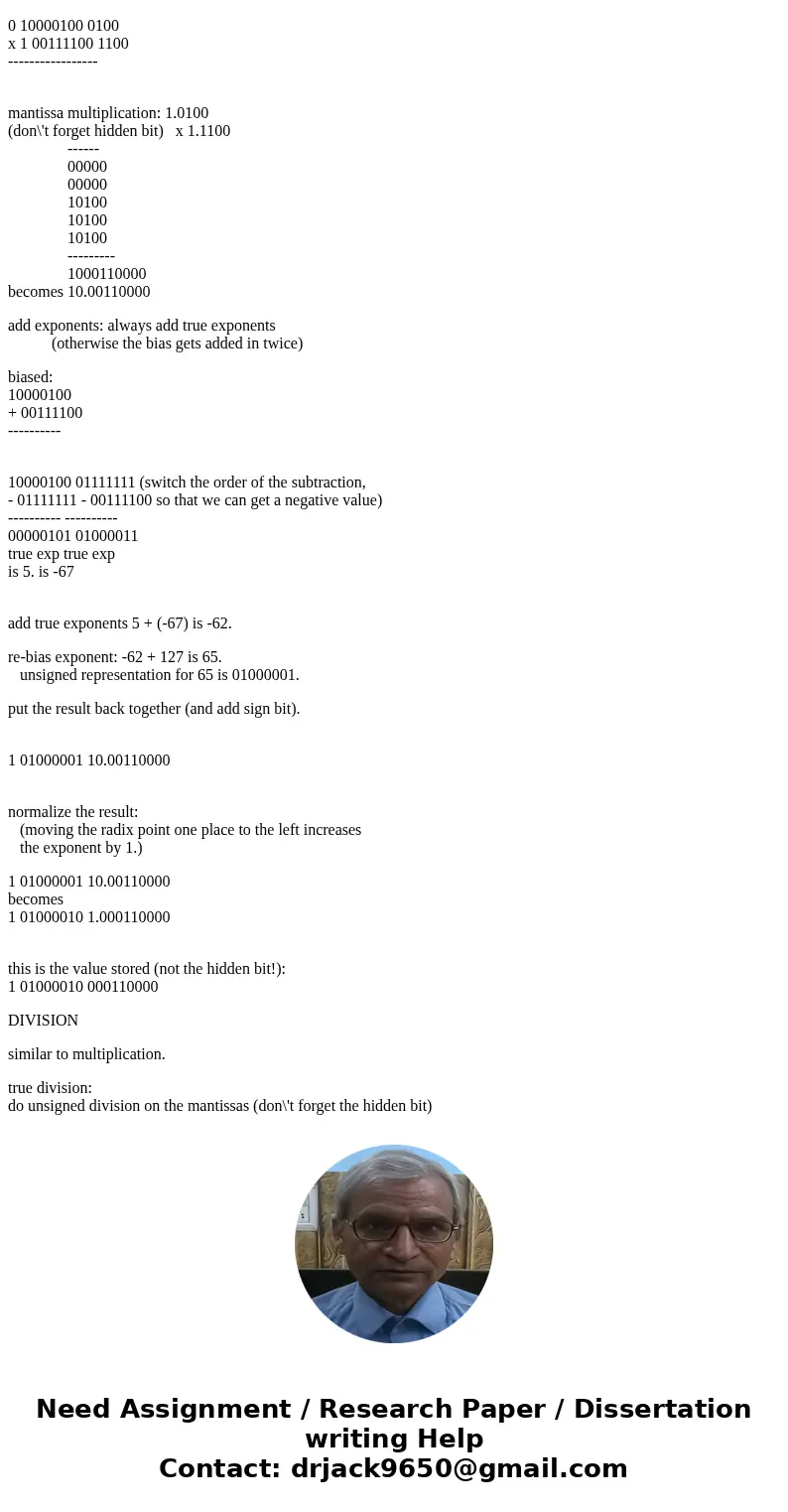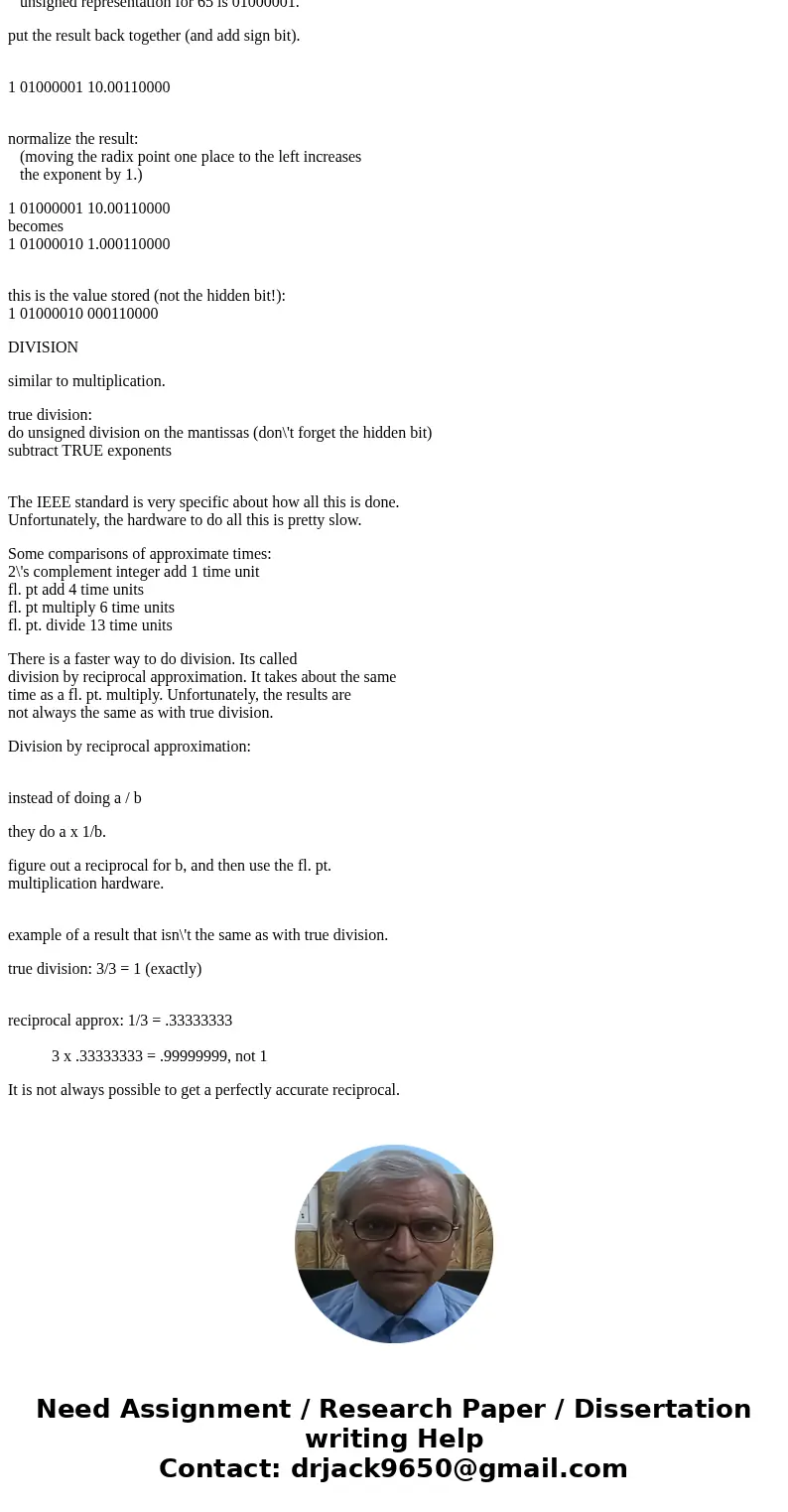Machine Epsilon I dont quite understand this question Any he
Machine Epsilon. I don\'t quite understand this question. Any help would be nice.
Consider the following floating point arithmetic operation fl(4000 + alpha) where fl indicates that we are carrying out the arithmetic in floating point. For what (approximate) values of alpha is the above floating point arithmetic operation equal to 4000?Solution
Hey!
The question you have asked is seems tough for you, so we will initialy start with \"What is floating point arithmatic Operation\" by which you can a good idea on this question.
Arithmetic operations on floating point numbers consist of
addition, subtraction, multiplication and division
the operations are done with algorithms similar to those used
on sign magnitude integers (because of the similarity of
representation) -- example, only add numbers of the same
sign. If the numbers are of opposite sign, must do subtraction.
ADDITION
example on decimal value given in scientific notation:
3.25 x 10 ** 3
+ 2.63 x 10 ** -1
-----------------
first step: align decimal points
second step: add
3.25 x 10 ** 3
+ 0.000263 x 10 ** 3
--------------------
3.250263 x 10 ** 3
(presumes use of infinite precision, without regard for accuracy)
third step: normalize the result (already normalized!)
example on fl pt. value given in binary:
.25 = 0 01111101 00000000000000000000000
100 = 0 10000101 10010000000000000000000
to add these fl. pt. representations,
step 1: align radix points
shifting the mantissa LEFT by 1 bit DECREASES THE EXPONENT by 1
shifting the mantissa RIGHT by 1 bit INCREASES THE EXPONENT by 1
we want to shift the mantissa right, because the bits that
fall off the end should come from the least significant end
of the mantissa
-> choose to shift the .25, since we want to increase it\'s exponent.
-> shift by 10000101
-01111101
---------
00001000 (8) places.
0 01111101 00000000000000000000000 (original value)
0 01111110 10000000000000000000000 (shifted 1 place)
(note that hidden bit is shifted into msb of mantissa)
0 01111111 01000000000000000000000 (shifted 2 places)
0 10000000 00100000000000000000000 (shifted 3 places)
0 10000001 00010000000000000000000 (shifted 4 places)
0 10000010 00001000000000000000000 (shifted 5 places)
0 10000011 00000100000000000000000 (shifted 6 places)
0 10000100 00000010000000000000000 (shifted 7 places)
0 10000101 00000001000000000000000 (shifted 8 places)
step 2: add (don\'t forget the hidden bit for the 100)
0 10000101 1.10010000000000000000000 (100)
+ 0 10000101 0.00000001000000000000000 (.25)
---------------------------------------
0 10000101 1.10010001000000000000000
step 3: normalize the result (get the \"hidden bit\" to be a 1)
it already is for this example.
result is
0 10000101 10010001000000000000000
SUBTRACTION
like addition as far as alignment of radix points
then the algorithm for subtraction of sign mag. numbers takes over.
before subtracting,
compare magnitudes (don\'t forget the hidden bit!)
change sign bit if order of operands is changed.
don\'t forget to normalize number afterward.
MULTIPLICATION
example on decimal values given in scientific notation:
3.0 x 10 ** 1
+ 0.5 x 10 ** 2
-----------------
algorithm: multiply mantissas
add exponents
3.0 x 10 ** 1
+ 0.5 x 10 ** 2
-----------------
1.50 x 10 ** 3
example in binary: use a mantissa that is only 4 bits so that
I don\'t spend all day just doing the multiplication
part.
0 10000100 0100
x 1 00111100 1100
-----------------
mantissa multiplication: 1.0100
(don\'t forget hidden bit) x 1.1100
------
00000
00000
10100
10100
10100
---------
1000110000
becomes 10.00110000
add exponents: always add true exponents
(otherwise the bias gets added in twice)
biased:
10000100
+ 00111100
----------
10000100 01111111 (switch the order of the subtraction,
- 01111111 - 00111100 so that we can get a negative value)
---------- ----------
00000101 01000011
true exp true exp
is 5. is -67
add true exponents 5 + (-67) is -62.
re-bias exponent: -62 + 127 is 65.
unsigned representation for 65 is 01000001.
put the result back together (and add sign bit).
1 01000001 10.00110000
normalize the result:
(moving the radix point one place to the left increases
the exponent by 1.)
1 01000001 10.00110000
becomes
1 01000010 1.000110000
this is the value stored (not the hidden bit!):
1 01000010 000110000
DIVISION
similar to multiplication.
true division:
do unsigned division on the mantissas (don\'t forget the hidden bit)
subtract TRUE exponents
The IEEE standard is very specific about how all this is done.
Unfortunately, the hardware to do all this is pretty slow.
Some comparisons of approximate times:
2\'s complement integer add 1 time unit
fl. pt add 4 time units
fl. pt multiply 6 time units
fl. pt. divide 13 time units
There is a faster way to do division. Its called
division by reciprocal approximation. It takes about the same
time as a fl. pt. multiply. Unfortunately, the results are
not always the same as with true division.
Division by reciprocal approximation:
instead of doing a / b
they do a x 1/b.
figure out a reciprocal for b, and then use the fl. pt.
multiplication hardware.
example of a result that isn\'t the same as with true division.
true division: 3/3 = 1 (exactly)
reciprocal approx: 1/3 = .33333333
3 x .33333333 = .99999999, not 1
It is not always possible to get a perfectly accurate reciprocal.




 Homework Sourse
Homework Sourse